|
|
|
 |

 |
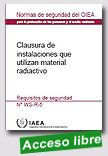 |
Clausura de Instalaciones que Utilizan Material Radiactivo
IAEA Colección de normas de seguridad, 2010, 25 p.
El objetivo de la presente publicación es establecer los requisitos de seguridad básicos que deben cumplirse durante la planificación y ejecución de la
clausura para el cese de las prácticas y la liberación de las instalaciones del control reglamentario.
|
Extraído de:
http://www-pub.iaea.org/MTCD/publications/PDF/Pub1274s_web.pdf
|
 |
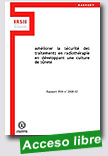 |
Améliorer la sécurité des traitements en radiothérapie en développant une culture de sûreté
Institut de Radioprotection et de Sûreté Nucléaire, Mars 2009, 38 p.
A la suite des déclarations d’accidents en radiothérapie faites en 2004 et 2006, l’IRSN a mené une étude sur la sécurité des traitements en radiothérapie et sur l’utilisation et l’adaptation pour le domaine médical de la démarche d’analyse de sûreté développée pour les installations nucléaires.
|
De cette étude, il ressort six axes d’investigation : doter les services de radiothérapie d’un véritable référentiel de sûreté; renforcer la robustesse de l’organisation des services de radiothérapie; améliorer la sûreté intrinsèque des équipements et logiciels; - améliorer la sûreté d’exploitation des équipements et logiciels; améliorer la gestion des compétences ;
- renforcer le retour d’expérience local, national et international sur les incidents et accidents.
L’enseignement marquant de cette étude est l’apport pouvant être tiré de l’adaptation des concepts et méthodes de l’analyse de sûreté aux spécificités de la radiothérapie, en prenant en compte l’organisation du travail collectif, les coopérations entre acteurs issus de métiers différents ainsi que les interactions entre acteurs et systèmes techniques au cours des traitements, lors de la mise en service et lors des contrôles périodiques
Extraído de:
http://www.irsn.fr/FR/expertise/rapports_expertise/Pages/
radioprotection_homme.aspx
|
 |
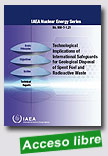 |
Technological Implications of International Safeguards for Geological Disposal of Spent Fuel and Radioactive Waste
IAEA Nuclear Energy Series, 2010, 29 p.
This publication addresses the potential technological implications for an operator when meeting IAEA requirements on the transfer of spent nuclear fuel and other safeguarded radioactive waste to a geological repository. These implications are based on both waste management and safeguards issues. All phases of the repository lifetime are considered from conception and design through to post-operational oversight.
|
The potential impact of the applied technical measures on the safe operation of the facility is given particular attention. Guidance is based on a generic design with a focus on the features likely to be relevant when meeting safeguards requirements. The conclusions drawn in this publication indicate to the waste management community at large, how safeguards requirements could be met effectively within the constraints of safety and acceptable performance.
Extraído de:
http://www-pub.iaea.org/MTCD/publications/PubDetails.asp?pubId=8185
|
 |
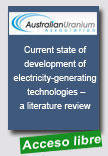 |
Manfred Lenzen's review of the scientific literature on the development of all available electricity generation technologies. The report suggests renewables are limited and nuclear energy is the key low-carbon, low-pollution, baseload technology.
The AUA wished to put the current state of development of uranium-fuelled nuclear energy technology in perspective with the current state of development of other electricity generation technologies.
|
The AUA asked Professor Manfred Lenzen of the University of Sydney's Centre for Integrated Sustainability Analysis to provide a detailed update on the state of nuclear electricity generation technology and that of other renewable and non-renewable generation technologies.
Professor Lenzen’s analysis of the scientific literature shows: The generating technologies currently available to provide base-load electricity are either fossil fuel-based or nuclear power or, in some cases, hydro-power; Nuclear power and power from renewables are the most effective technologies for minimizing greenhouse gas emissions; they have significant mitigation potential and low energy requirements; The mature technologies are the fossil fuel technologies, nuclear, hydro and wind The technologies still in development are coal with carbon capture and storage, geothermal and solar (photovoltaic and solar thermal); Wind power requires the least energy input per unit of electricity output, followed closely by large hydro and nuclear, then solar and fossil fuels
Hydro is the least subsidised technology, followed by nuclear and geothermal, wind, coal, biomass and solar; The fossil fuel-based technologies cost least, followed by nuclear and wind, then hydro and then solar; All the technologies face barriers to their development and deployment, which reinforces the need for countries to consider a full portfolio of technologies
Extraído de:
http://aua.org.au/Content/Lenzenreport.aspx
|
 |
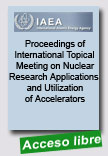 |
Proceedings of International Topical Meeting on Nuclear Research Applications and Utilization of Accelerators
IAEA Proceedings CD Series, 2010, s. p.
The IAEA International Topical Meeting on Nuclear Research Applications and Utilization of Accelerators was held on 4-8 May 2009 in Vienna. Two hundred and forty participants attended the conference, of which 71 were from developing Member States. Fifty Member States, of which 28 were developing Member States, and 4 international organizations participated in the conference. Twenty-six of the 240 participants were female
|
scientists, from both developed and developing Member States. The present conference was held in cooperation with the American Nuclear Society (ANS).
The conference was opened by Y. Sokolov, Deputy Director General, Department of Energy, who presented the interest of the IAEA in accelerator applications related to structural material development and partitioning and transmutation, topics relevant for nuclear power development and their increasing interest in the world. He was followed by W. Burkart, Deputy Director General, Department of Nuclear Sciences and Applications, who spoke on the role accelerator in broad perspective of science and technology, with emphasis on practical development in education, bio-medical applications, material research, food and agriculture, environmental science, cultural heritage. Additional remarks were made by E. Pitcher, representative of the ANS.
A total of 153 oral papers were presented and 145 posters displayed during the 49 sessions of the conference, including the satellite meetings. The main objectives of the conference as stated in the announcement were to promote exchange of information among IAEA Member States representatives/delegates and to discuss new trends in: Accelerator Applications including Nuclear Materials Research, Accelerator Driven Systems (ADS) and Accelerator Technology.
Extraído de:
http://www-pub.iaea.org/MTCD/publications/PDF/P1433_CD/datasets/summary.html |
 |
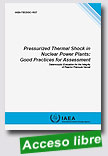 |
Pressurised Thermal Shock in Nuclear Power Plants: Good Practices for Assessment
IAEA TECDOC Series, 2010, 229 p.
Pressurized thermal shock (PTS) analysis, which is a part of reactor pressure vessel (RPV) structural integrity assessment, is associated with large thermal shocks and, in some cases, with low temperature repressurization of the RPV after a certain time. At present, several different procedures and approaches are used for RPV integrity assessment. This publication provides benchmark calculation and analysis, which compare
|
effects of individual parameters on the final RPV integrity assessment. Based on this, the publication provides recommendations for best practice for their implementation in PTS procedures.
Extraído de:
http://www-pub.iaea.org/MTCD/publications/PubDetails.asp?pubId=8237
|
 |
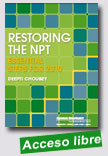
|
Restoring the NPT: Essential Steps for 2010
Carnegie Endowment for International Peace, November 2009, 70 p.
With growing fears about Iran and North Korea’s nuclear programs, conventional wisdom holds that the nonproliferation regime is on the verge of collapse. The upcoming 2010 Non-Proliferation Treaty (NPT) Review Conference is an opportunity to strengthen the regime, but it is in danger of being overloaded by expectations. The author (Deepti Choubey) identifies achievable goals for the Review Conference and outlines steps
|
that nuclear-weapon states—including recommendations tailored for the United States—and non–nuclear-weapon states should take to avert failure.
Extraído de:
http://www.carnegieendowment.org/publications/index.cfm?fa=view&id=24177
|
 |
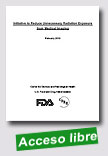 |
Initiative to Reduce Unnecessary Radiation Exposure from Medical Imaging
U.S. Food and Drugs Administration (FDA), February 2010, 12 p.
Like all medical procedures, computed tomography (CT), fluoroscopy, and nuclear medicine imaging exams present both benefits and risks. These types of imaging procedures have led to improvements in the diagnosis and treatment of numerous medical conditions. At the same time, these types of exams expose patients to ionizing radiation, which may elevate a person’s lifetime risk of developing cancer. As part of a
|
balanced public health approach, the U.S. Food and Drug Administration (FDA) seeks to support the benefits of these medical imaging exams while minimizing the risks.
Through the Initiative to Reduce Unnecessary Radiation Exposure from Medical Imaging1, FDA is advocating the universal adoption of two principles of radiation protection: appropriate justification for ordering each procedure, and careful optimization of the radiation dose used during each procedure. Each patient should get the right imaging exam, at the right time, with the right radiation dose.
In support of this goal, FDA will use our regulatory authority and also collaborate with others in the Federal government and the healthcare professional community to: Promote safe use of medical imaging devices; Support informed clinical decision making; and Increase patient awareness. By coordinating these efforts, we can optimize patient exposure to radiation from certain types of medical imaging exams, and thereby reduce related risks while maximizing the benefits of these studies.
Extraído de:
http://www.fda.gov/Radiation-EmittingProducts/RadiationSafety/RadiationDoseReduction/ucm199904.htm
|
 |
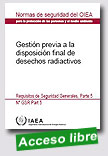 |
Gestión previa a la disposición final de desechos radiactivos
OIEA Colección de normas de seguridad, 2010, 44p.
El objetivo de la presente publicación de Requisitos de Seguridad es establecer, en función de los principios enunciados en la referencia [2], los requisitos que deben cumplirse en la gestión previa a la disposición final de los desechos radiactivos. La presente publicación abarca requisitos que van numerados y en letra negrita, expresados mediante formas verbales futuras con valor imperativo, así como otras consideraciones sobre condiciones conexas que
|
también deben cumplirse, expresadas de otra forma.
En esta publicación se establecen los objetivos, criterios y requisitos para la protección de la salud humana y el medio ambiente aplicables al emplazamiento, el diseño, la construcción, la puesta en servicio, la explotación y la parada de las instalaciones para la gestión previa a la disposición final de los desechos radiactivos, así como las condiciones que deben satisfacerse con miras a garantizar la seguridad de esas instalaciones y actividades.
Extraído de:
http://www-pub.iaea.org/MTCD/publications/PDF/Pub1368s_web.pdf
|
 |
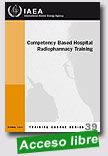 |
Competency Based Hospital Radiopharmacy Training
IAEA Training Course Series, 2010, 162 p.
The IAEA has a long history (over 20 years) of providing assistance for nuclear medicine to its Member States. This includes establishment and operation of nuclear medicine centres for diagnosis and treatment using radiopharmaceuticals. Following recruitment of a specialist radiopharmacologist to the nuclear medicine section, with extensive expertise in the hospital radiopharmacy sector, the IAEA has accelerated its efforts to strengthen all aspects of
|
quality programs related to clinical practice. This includes a new chapter in International Pharmacopoeia on Radiopharmaceutical, IAEA operational guidance on Hospital radiopharmacy and a series of guidance documents on quality management in nuclear medicine. The central objective is to strengthen practice by facilitating and empowering
continuous quality improvement. One area that was found in serious need of attention was the deficiencies directly related to ‘hot laboratory’ practices. Many of the staff had simply learned from others whilst in employment. This competency based training manual is designed with these individuals in mind. Unlike other IAEA training courses this training program includes 1-2 weeks of standardized lectures, practical and interactive sessions followed by three months of follow-up, in which the individual has to apply and demonstrate learning. The net result is improvement in daily standards of practice and optimization of resources in the
radiopharmacy.
Extraído de:
http://www-pub.iaea.org/MTCD/publications/PDF/TCS-39_web.pdf
|
|
|
|
|
|
| |
|
|
|
|
|
